Categories
Latest Updates
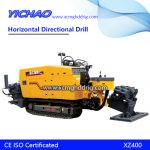
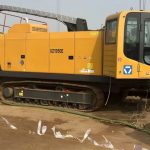
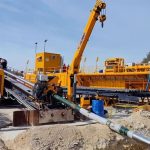
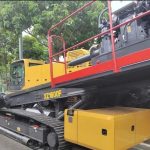
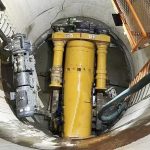
1. Why is trenchless technology needed?
Answer: (1) Pipeline laying, replacement, and repair work that passes through rivers, lakes, important traffic arteries, and important buildings without excavation.
(2) Social reasons: It can solve the interference of traditional excavation construction on the normal life of residents, and the damage and adverse effects on the traffic, environment, and surrounding building foundations.
(3) Economic reasons: There are better economic and social benefits. Under the same comparability, the cost of laying, replacing and repairing trenchless pipelines is lower than that of excavation construction. The larger the pipe diameter, the deeper the buried. The bigger it is, the more obvious it is.
(4) Technical reasons: In occasions where traditional construction methods cannot be used or excavation is not allowed, trenchless technology can be used to traverse and lay from below, and the pipeline can be designed to pass through in the best place with the smallest amount of engineering. The laying direction and buried depth of underground pipelines can be controlled with high precision, and the pipeline can bypass undiscovered underground obstacles.
2. What technologies are included in non-excavation?
Answer: (1) Engineering geological conditions survey technology
(2) Underground pipeline detection technology
(3) Pipeline internal inspection technology
(4) Horizontal directional drilling technology
(5) Pipe jacking/mini tunnel technology
(6) Construction technology of impact spear and rammed pipe
(7) Pipeline in-situ repair and replacement technology
3. What are the pipe materials for underground pipelines? What are the main pipe materials for drainage pipes, gas pipes, and heating pipes?
Answer: The pipes mainly include: steel pipes, cast iron pipes, plastic pipes, reinforced concrete pipes, and concrete pipes.
1) Drainage pipes: predictable concrete pipes, reinforced concrete pipes, cast iron pipes, asbestos cement pipes, clay pipes, and cylinder tile pipes.
2) Gas pipeline: mostly steel pipes, followed by cast iron pipes with sockets and polyvinyl chloride plastic pipes.
3) Thermal pipelines: seamless steel pipes and steel coil welded pipes. Secondly, plastic pipes and cast iron pipes are also used.
4. Do you know the following pipe materials? PE, PP, PVC, GRP, HDPE
Answer: PE: polyethylene; PP: polypropylene; PVC: polyvinyl chloride; GRP: fiberglass reinforced resin; HDPE: high-density polyethylene.
5. Is trenchless omnipotent? When can I dig?
Answer: Under the following circumstances, the cost of trenchless construction is lower than the cost of excavation construction, and it is appropriate to conduct trenchless construction at this time:
(1) The buried depth is greater than 3 meters;
(2) Under busy roads;
(3) Close to existing underground pipelines;
(4) In unstable stratum;
(5) Below the groundwater level;
(6) In environmentally sensitive areas;
(7) In industrial and commercial areas or residential areas.
6. What is the principle of guided drilling briefly?
Answer: (1) The directional drilling is completed by the cooperation of the directional drill, the drilling rig, and the directional instrument;
(2) If the drill pipe string is fed and rotated at the same time, the inclined plane loses its directionality, realizing straight drilling;
(3) If only the non-rotating drill pipe string is fed, the reaction force acting on the inclined plane causes the drill bit to change its direction to achieve skew drilling.
7. Which environmental problems can horizontal directional drilling be used for?
Answer: Extraction of groundwater, soil gasification and separation, recovery of free products, biological treatment, soil layer cleaning and chemical stabilization, soil layer monitoring and sampling.
8. Common technical difficulties and countermeasures in horizontal directional drilling? (Collapsed hole, lost hole, stuck drill)
Answer: a. Collapsed hole-due to some reasons, the rock or soil on the wall of the hole falls into the hole to varying degrees to become a collapsed hole.
Prevention: 1) Adjust and maintain proper mud density and rheological properties; 2) Turn on the pump and do not trip too fast; 3) Increase the drilling speed and shorten the construction period;
b. Drilling leakage
Prevention: 1) Reduce pressure excitement to avoid leakage from cracks; 2) Use low-density mud; 3) Keep the mud up and down speed small; 4) Prepare enough mud;
c. Sticking-Drilling leakage and ineffective handling will cause sticking. Including adhesion stuck, sand stuck, collapsed hole stuck, mud pack stuck, reduced diameter stuck drill, etc.
Prevention: Maintain good, uniform and stable mud performance, control the solid content of the mud, and add lubricating substances or lubricants.
9. How to traverse hard rock formations smoothly?
Answer: For drilling and reaming, hard rock has the following characteristics:
(1) Because the rock is hard and frictional, the cost of breaking the rock during drilling is large, the footage is slow, the drill bit is severely worn, and it is easy to generate heat and burn the drill.
(2) The borehole wall formed by drilling in hard rock is relatively stable. Except for encountering larger stratum fracture zones, under normal circumstances, it is not prone to collapse holes like soil, shale and sand gravel layers.
(3) As hard rock drilling mostly uses grinding method to crush the rock, the drill cuttings particles are fine, so it is easier to suspend the drill cuttings.
The design of the pore-forming fluid for hard rock formations should focus on enhancing lubricity and cooling, and reducing the solid content in order to increase the drilling rate; however, the suspension capacity and wall protection of the pore-forming fluid are often not required.
As far as reducing the resistance of pipe laying is concerned, trenchless pipe laying in many stratums often encounters greater resistance to pipe jacking and pipe drawing, which leads to difficulties in pipe laying, and sometimes even halfway failure. One of the key technologies to solve this problem is to use a pore-forming fluid with good lubricating properties to significantly reduce the rock-soil friction coefficient of the pore wall.
The lubricating drag-reducing pore-forming fluid can be divided into three types: emulsion, polypropylene phthalamide slurry and emulsified mud.
10. What are the methods of internal pipeline inspection? What types of damage can each be detected?
Answer: Overseas (TV inspection, fiber optic endoscope, sonar inspection, dye inspection, smoke inspection, leak detection and plugging ring);
Domestic (Mud Bucket Inspection, Standard Cattle Inspection, Ground Subsidence Judgment, Underground Light Inspection, Sludge Composition Judgment, Diver Inspection);
Sonar method: Use reflected high-frequency sound waves to locate the discontinuity of the medium.
1) It can detect the part covered by water or silt;
2) Data about pipe size (pipe end size and shape) can be provided;
3) The degree of deformation and the size of cracks can be displayed.
